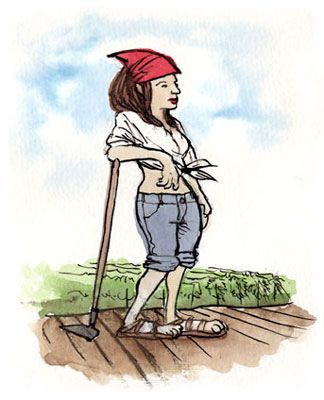
 Born on the wings of a continental gold rush, in 1848 wine grapes were first introduced in Placer County, the same year James Marshall discovered gold. The Frenchman, Claude Chana, who discovered gold in Auburn Ravine, planted the first grape vines. Along with eager and thirsty miners, the Gold Rush of 1848 brought European winemakers who established larger vineyards and started producing increasing quantities and varieties of wine. In the 1860s winemaking became a thriving industry throughout the Mother Lode and many became winemakers, giving Placer County more vineyards and wineries than Sonoma and Napa combined. Then, in 1920 Prohibition made alcohol illegal and most vineyards were converted to pear, apple and citrus orchards. In the 1970s local winemakers began to establish new vineyards and returned the land to its winemaking roots.
Placer County's Mediterranean-like warm days and cool nights are well suited for producing superior wine grapes similar to those of France's Rhone Valley. This climate and well drained granitic soils produce structured wines dense with ripe fruit. You'll find everything from traditional Rhone-varietals like Syrah, Petite Sirah and Viognier to the Spanish Tempranillo, the Italian Barbera and Zinfandel, Cabernet Sauvignon and Cabernet Franc.
Born on the wings of a continental gold rush, in 1848 wine grapes were first introduced in Placer County, the same year James Marshall discovered gold. The Frenchman, Claude Chana, who discovered gold in Auburn Ravine, planted the first grape vines. Along with eager and thirsty miners, the Gold Rush of 1848 brought European winemakers who established larger vineyards and started producing increasing quantities and varieties of wine. In the 1860s winemaking became a thriving industry throughout the Mother Lode and many became winemakers, giving Placer County more vineyards and wineries than Sonoma and Napa combined. Then, in 1920 Prohibition made alcohol illegal and most vineyards were converted to pear, apple and citrus orchards. In the 1970s local winemakers began to establish new vineyards and returned the land to its winemaking roots.
Placer County's Mediterranean-like warm days and cool nights are well suited for producing superior wine grapes similar to those of France's Rhone Valley. This climate and well drained granitic soils produce structured wines dense with ripe fruit. You'll find everything from traditional Rhone-varietals like Syrah, Petite Sirah and Viognier to the Spanish Tempranillo, the Italian Barbera and Zinfandel, Cabernet Sauvignon and Cabernet Franc.
|
|
Current Feature
In the southern Blue Ridge Mountains of North Carolina and Georgia vineyards are small and few, yet the establishment of the Upper Hiwassee Highlands could bring much more.
[>] continue
Related Features
Alive & Well here

Barbera:
Miss Barbera, you amaze us with your work ethic. It must be engrained in your nature. You arrived
[>] continue
